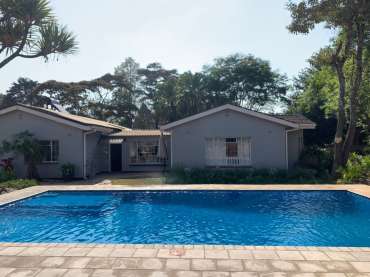The beauty and usefulness of a swimming is achieved if it is clean and the quality of the water is at the optimum level. The quality of the water is achieved by ensuring that the chemicals are balanced and all the parameters involved are at the right levels
To help you get a handle on what water balance means and how you can maintain it, we will look at the factors that help you shape water quality. Please ensure you test your water regularly to ensure that all parameters are within acceptable range.
Chlorine
Is acting as the main sanitizer to kill algae and bacteria in the pool water. The level should be between 2.0 and 3.0 on your test kit. During hot weather, high readings are better. The parameter is known as Free Available Chlorine (FAC)
Combined Chlorine
Combined chlorine is formed by chlorine combining with ammonia and other nitrogen containing organic compounds. Some sources of these compounds include perspiration, urine, saliva and body oils. These combined forms of chlorine, also called chloramines, are still disinfectants, but they are 30 to 50 times less effective than FAC. Chloramines kill slowly, so when they are formed in swimming-pool water, the FAC is no longer present for “instant kill” sanitation. Free available chlorine and combined chlorine exist together in many pools. In addition to reduced effectiveness against bacteria, chloramines cause eye irritation and the so-called ‘chlorine odor” that swimmers complain about. Chloramines have a foul, irritating odor; free chlorine in water in normal concentration has no discernable odor.
pH
It is the measure of acidity or alkalinity of the pool water. You must maintain a good pH level or your chlorine will not work effectively. The level should be between 7.2 and 7.6. The most fragile and arguably the most important component of water balance is pH, a reading that indicates how acidic or basic your pool and spa water is. It is suffice to say here that it’s the most important parameter to monitor as it affects the effectiveness of your sanitizer and it also affects surfaces and equipment of your pool. You can adjust your pH by adding hydrochloric acid if it is too high or by adding soda ash if it is too low
Total Alkalinity
Closely related to pH, but the two must not be confused. Total alkalinity is a measure of the amount of alkaline materials in the water. This alkalinity will usually be present as bicarbonates, but with a very high pH carbonates and hydroxides can be present aswell.
The relevance to pH is that the amount of alkali (hardness) in the water will determine how easy it is for changes in pH to occur.
It is a pH “stabilizer”. It helps to keep the pH within the proper levels so that the chlorine can work effectively. It reduces pH fluctuations. The level should be range from 80ppm – 140ppm. Now that you know where your pH level should be, it’s time to consider the total alkalinity.
The most important thing to remember about total alkalinity is that it affects your pH levels and therefore must be tested before you do any pH testing and adjustments
Water Hardness
Water hardness is a concentration of the calcium and magnesium in your pool and spa water but is often referred to simply as calcium hardness. The amount of calcium hardness your water will have varies depending on your water source. Well water, for example, has a higher mineral content — or is harder — than a fresh-water source that has gone through a treatment plant.
Note: You do want your water to have some level of hardness. If it’s too soft, the water will slowly but surely dissolve the plaster and any metal in your pool and spa equipment.
Like pH and alkalinity, calcium hardness affects the tendency of water to be corrosive or scale forming. It also appears to affect the kind of scale formed. When a calcium carbonate precipitate occurs in soft water, the scale particles are large and coarse. This is seen in many tap water pipes where the local water treatment plants soften the water to 100 ppm or less. Hard water, however, appears to produce a protective scale that has smaller, finer particles that prevent corrosion. Thus, the pool operator should test and maintain calcium hardness at 200 ppm, or higher, both to provide sufficient calcium ion for saturation as calcium carbonate (50 ppm minimum) and to ensure that, if a scale forms at all, it is the less harmful form (200 ppm or more). Calcium hardness is increased by the addition of hydrated calcium chloride, a readily available form of calcium salt.
Stabilizer (Cynauric Acid)
Forms a protective bond around the chlorine, making it more resistant to being burned off by the sun. Makes chlorine tablets last longer. Pools should be stabilized whenever large amounts of fresh water are added. The level should be 35 ppm and is adjusted by adding Stabilizer Conditioner. Usually Cyanuric Acid is used as Stabilizer.
At pool village we are glad to assist you with anything swimming pool related.


